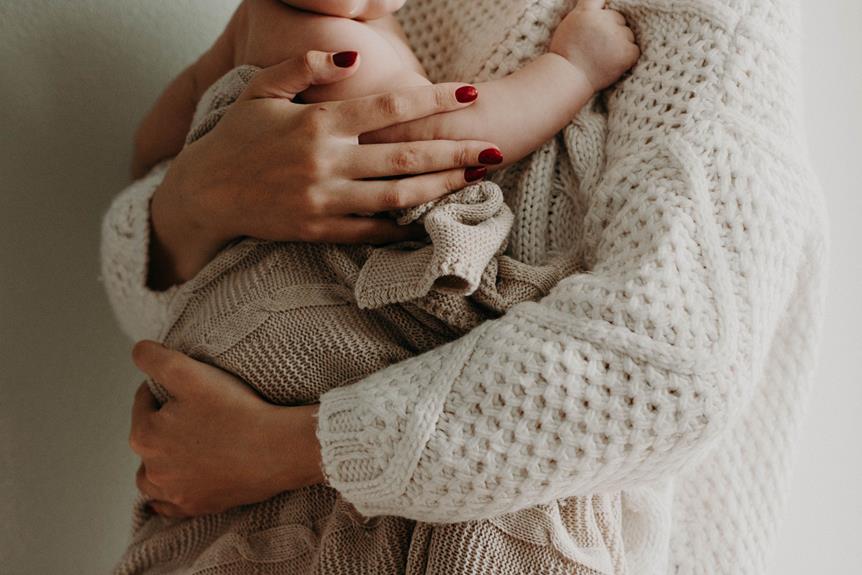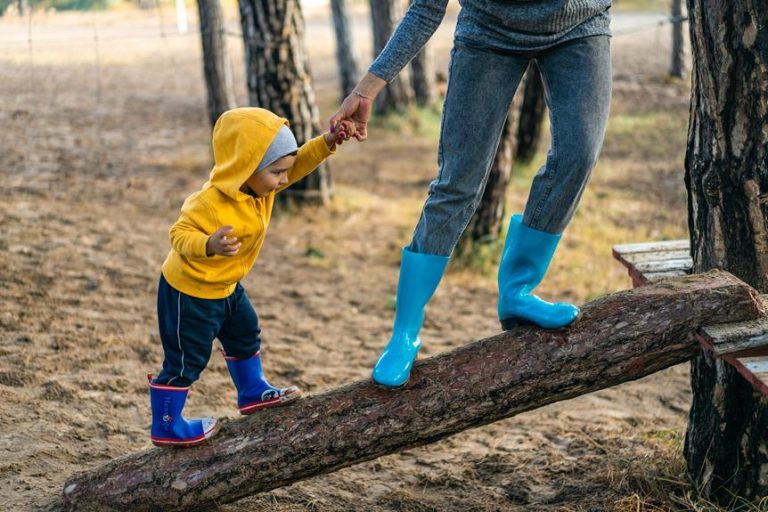When Do You Stop Using a Baby Monitor

As parents, we constantly strive to strike a delicate balance between ensuring our child's safety and fostering their independence. One aspect of this balance is the use of a baby monitor. While it offers a sense of reassurance and peace of mind during the early stages of parenthood, the question of when to stop using a baby monitor lingers in the minds of many.
Is it when your child reaches a certain age? Or perhaps when they start sleeping through the night consistently? In this discussion, we will explore the various factors that come into play when considering the appropriate time to bid farewell to the baby monitor, taking into account developmental milestones, home layout, and parental confidence, among other factors.
So, when is the right time to relinquish this technological lifeline? Let's delve into the intricacies and nuances of this decision, and uncover the answer together.
Age of the Child
As the child grows and develops, there comes a point when it is appropriate to stop using a baby monitor. One of the factors to consider when deciding to discontinue the use of a baby monitor is the age of the child. While there is no set age at which all children should no longer require monitoring, there are certain milestones and developmental stages that can be taken into account.
Typically, by the age of one, most children have transitioned out of their cribs and into a toddler bed. At this stage, they are more independent and capable of calling for help if needed. Additionally, their physical abilities, such as walking and climbing, make it less likely for them to be in immediate danger while unsupervised.
However, it is essential to note that every child is different, and factors such as sleep patterns, health conditions, and individual development should be considered. Some children may continue to require monitoring beyond the age of one, while others may be ready to transition earlier.
Ultimately, the decision to stop using a baby monitor should be based on the child's individual needs and the parent's comfort level. It is important to trust your instincts and make an informed decision that promotes the child's safety and allows them the freedom they need as they continue to grow and develop.
Sleeping Patterns
One important factor to consider when deciding when to stop using a baby monitor is the child's sleeping patterns. Understanding your child's sleep habits can help you determine if they still need to be monitored during their sleep or if they have developed a consistent and safe sleeping routine.
To help you assess your child's sleeping patterns, here is a table that outlines the common sleeping milestones and signs that indicate they may no longer need a baby monitor:
| Age Range | Sleeping Patterns | Signs of Independence |
|---|---|---|
| Newborn | Irregular sleep patterns, frequent waking during the night | Still requires monitoring due to their vulnerability and need for frequent feeding and care |
| 3-6 months | Longer stretches of sleep at night, more predictable naps during the day | Begins to self-soothe and settle back to sleep without assistance |
| 6-12 months | Established sleep routine, longer periods of uninterrupted sleep | Can navigate the crib and room independently, less likely to need immediate attention |
| 1-2 years | Consistent nap and bedtime routine, mostly sleeping through the night | Able to communicate needs and call for assistance if necessary |
It's important to note that every child is unique, and these milestones are just general guidelines. Trust your instincts as a parent and consider factors such as your child's safety, development, and your own peace of mind when deciding to stop using a baby monitor.
Developmental Milestones
Developmental milestones play a crucial role in determining when it is appropriate to stop using a baby monitor. As babies grow and develop, they reach certain milestones that indicate increasing independence and self-sufficiency. These milestones include rolling over, sitting up, crawling, and eventually walking.
Once a baby starts achieving these milestones, they become more capable of moving around and exploring their environment. This increased mobility reduces the need for constant monitoring through a baby monitor. As babies become more adept at independent movement, they also become better at alerting their caregivers when they need assistance or attention.
It is important to note that developmental milestones can vary from child to child, and some babies may achieve them earlier or later than others. Therefore, it is essential to consider the individual needs and capabilities of the child when deciding to stop using a baby monitor.
Parents should observe their baby's progress and consult with pediatricians to determine if their child has reached the necessary milestones to safely transition away from a baby monitor. It is crucial to balance the desire for freedom and independence with the need to ensure the safety and well-being of the child.
Safety Precautions
To ensure the safety of your child, it is important to take certain safety precautions when using a baby monitor. Baby monitors can be a valuable tool for parents to keep an eye on their little ones, but it is essential to use them responsibly. Here are some safety precautions to consider:
- Choose a secure monitor: Opt for a monitor with secure digital technology to prevent unauthorized access. This will ensure that no one else can view or listen to your baby monitor feed.
- Position the monitor properly: Place the monitor at a safe distance from your baby's crib to avoid any potential risks of strangulation or entanglement. Make sure all cords are secured and out of reach.
- Use encryption: If your baby monitor offers encryption, enable it. This will protect the privacy of your video and audio feed from being intercepted by others.
- Regularly update firmware: Keep your baby monitor's firmware up to date to ensure it has the latest security patches. Check the manufacturer's website for any available updates.
- Secure your home network: Use a strong and unique password for your Wi-Fi network to prevent unauthorized access to your baby monitor feed.
Home Layout and Size
When considering the safety precautions for using a baby monitor, it is also important to take into account the layout and size of your home. Different home layouts and sizes can affect the effectiveness and range of a baby monitor. Here are some factors to consider:
- Number of floors: If your home has multiple floors, you may need a baby monitor with a longer range to ensure a secure connection between the nursery and your location.
- Distance between rooms: The distance between the nursery and your room or the living area can impact the signal strength of the baby monitor. Thick walls or large distances may require a monitor with a stronger signal or increased range.
- Obstacles and interference: Obstacles such as walls, furniture, or electronic devices can weaken the signal of a baby monitor. It is important to choose a monitor that can overcome these obstacles or consider using additional devices like Wi-Fi range extenders.
Parental Confidence and Peace of Mind
Parental confidence and peace of mind are crucial factors in determining when to stop using a baby monitor. As parents gain experience and become more attuned to their child's needs, they may start to feel more confident in their ability to monitor their baby without the assistance of a monitor. This confidence often comes with time and the development of a strong bond between parent and child.
Peace of mind is also an important consideration. Some parents may find that using a baby monitor helps them feel reassured and less anxious about their baby's well-being. However, as their child grows and becomes more independent, parents may start to feel that constant monitoring is no longer necessary. They may feel confident in their ability to respond to their child's needs without relying on a monitor.
It is important for parents to trust their instincts and make a decision that aligns with their own comfort level. Every parent is different, and what works for one family may not work for another. Ultimately, the decision to stop using a baby monitor should be based on the parent's confidence in their ability to care for their child and their peace of mind.
Transitioning to a Toddler Bed
The transition to a toddler bed is an important milestone in a child's development. It signifies their growing independence and readiness to move beyond the confines of a crib. As a parent, it is crucial to approach this transition with careful consideration and preparation. Here are some key points to keep in mind:
- Timing: The ideal time to transition to a toddler bed is between 18 months and 3 years old. However, every child is different, so it's important to assess their readiness based on factors such as their climbing ability and behavior.
- Safety: Ensure that the toddler bed meets safety standards, with guardrails and a secure mattress. Remove any potential hazards from the room and ensure that the bed is placed away from windows and cords.
- Communication: Talk to your child about the transition and involve them in the process. Let them choose their bedding or a favorite stuffed animal to make them feel comfortable and excited about the new bed.
- Consistency: Establish a bedtime routine and stick to it. This will help your child feel secure and adjust to the new sleeping arrangement.
Frequently Asked Questions
Can a Baby Monitor Be Used for Older Children or Is It Only for Infants?
A baby monitor can be used for older children as well, not just infants. It provides parents with peace of mind by allowing them to monitor their child's activities and ensure their safety, even as they grow older.
How Long Should I Use a Baby Monitor During Nap Times?
When determining how long to use a baby monitor during nap times, it is important to consider the individual needs and safety of the child. Consult with pediatricians or child safety experts for personalized guidance in making this decision.
Are There Any Risks Associated With Using a Baby Monitor?
There are potential risks associated with using a baby monitor, such as false alarms, privacy concerns, and electromagnetic radiation exposure. It is important to weigh these risks against the benefits and make an informed decision based on individual circumstances.
What Are Some Alternative Ways to Ensure My Child's Safety Without a Baby Monitor?
Ensuring a child's safety sans a baby monitor entails exploring alternative methods. Consider employing proximity alarms, video surveillance, or wearable devices. Each option offers distinct advantages, allowing parents to maintain a sense of freedom while ensuring their child's security.
How Can I Tell if My Child Is Ready to Stop Using a Baby Monitor?
Determining when to stop using a baby monitor depends on factors such as the child's age, development, and sleeping habits. It is important to consider the child's safety and your comfort level before making a decision.
Conclusion
In conclusion, the decision to stop using a baby monitor varies depending on the child's age, sleeping patterns, developmental milestones, safety precautions, home layout and size, as well as parental confidence and peace of mind.
It is important for parents to assess these factors and make an informed choice.
Just like a bird leaving its nest, gradually removing the baby monitor can symbolize the child's growing independence and the parent's increasing trust in their ability to sleep soundly and safely.





